Podcast: Play in new window | Download
Show Notes
Today, we cover why compost is awesome for your lawn and garden!
Why compost is awesome
- One of the safest and best fertility boosters of all time
- General elixir for soil and plant health
- Age-old fertility booster
- Composted manure
- What is it
- Degraded & digested organic matter
- Bacterial & fungal digestion
- Nutrients made bioavailable to plants & organisms
- An amazing natural amendment
- Biology
- Organic matter
- pH buffering
- nutrients
- soil builder
- Biology
- Some bacterial-dominated, some fungal-dominated
- Smell: sweet, forest floor, ‘earthy’ – fungal
- Ideally want good fungal-dominated
- Should not be hot – still composting
- Can ‘burn’ plants
- Some bacterial-dominated, some fungal-dominated
- Chemistry
- Organic acids – important for plant and microbe nutrient transfer
- How to use
- Spread as amendment
- Late fall, early spring
- Strain with hardware mesh
- Late fall, early spring
- Mix into topsoil amendments
- Compost tea
- Brew a concoction to boost soil microbes
- Spray across lawn or garden
- Always use on surface
- Can disrupt soil ecosystem if tilled or dug under
- Can cause anaerobic conditions
- Spread as amendment
- Where to get
- Municipal
- Landscape suppliers
- Stores
- Tips
- Smell it! Feel it!
- Get as much as your budget allows
- Get more than you think you need
- How to make
- C:N balance
- Grass clippings + leaves
- Rodale guide to composting
- youtube
Links for today’s episode:
- Super easy compost guide at Tenth Acre Farm
- Rodale Book of Composting (affiliate link)
- Launch Party!
- How to save 27 hours of work
- Consult with Ben
- Paul Tukey
- Rolling River Nursery
I’m Ben Hale your virtual design guide
to help you and your family have a
healthy beautiful landscape with less
work what’s up and welcome to episode 14
of the aesthetic ecosystems podcast man
it is springtime and you know it’s funny
actually because here in Ohio our April
has been ridiculous it’s been like we’ve
had some night days that feel like some
are almost we’ve hit almost hit 80
already but then we’ve had days where
it’s crazy cold we’ve had several frost
warnings and and yeah it’s just all over
the place that’s the Midwest for you
guys I’m not gonna lie I’m a little
jealous of you folks that live slightly
closer to the equator and are
experiencing warmer weather as we speak
today when I’m recording this it’s it’s
in the 40s right now as opposed to what
might be more of a seasonally
appropriate temperature but regardless
I’m happy that there is sunshine I’m
happy that we’re seeing lots of birds
coming around and things are starting to
pop in the garden we’re starting to get
a lot of greenery and that’s all
exciting and fun despite the temperature
it’s it’s still fun to get outside and
to see things moving around so before we
get into it today I wanted to share
something I have had some awesome
reviews on iTunes so far I thank you for
everybody that’s left a review to this
point and if you haven’t please consider
doing so I wanted to share one of the
reviews with you today one of the
reviews is from n Martin and they say
love the new ideas can’t wait to use
these tips and tricks thank you very
much for sharing that these reviews go a
long way to helping other people
understand what the show is about and to
really see you know if it’s if it’s
worth a listen so if you think that this
show is worth listen to other people
that might be wanting to learn about the
show please consider going to iTunes and
leaving an honest review there and and
also to
I’m happy to share if you’d like your
name and review shared on the podcast go
go on over to aesthetic ecosystems comm
slash pod that’s /p OD and right at the
top there you see an option to ask a
question or to contact me about the show
and just let me know that you love to
review there and leave me your name as
well right now iTunes has this weird
thing where you have to leave a nickname
and it has to be unique so it’s kind of
crazy too
you can’t really leave your name there
and expect it to go through as a review
so if you want if you want me to share
your name on the show I’m happy to do so
and I’d sure appreciate you reaching out
to me anyway so so thank you very much
and again consider leaving your view on
iTunes if you haven’t already I’d love
to hear from you okay let’s get into the
topic for today’s show I’m super excited
as usual about this topic today we are
gonna be talking about why compost is
awesome that’s right compost is awesome
and if you don’t know why or if you
haven’t heard people rave about compost
or if you don’t rave about compost
yourself I’d love for you to stick
around on the today’s show and really
learn what the beauty of compost really
is that’s right it’s degraded plant
matter how can that be so beautiful well
compost does amazing stuff for us and it
really can make huge difference in your
yard and your landscape if you
incorporate compost into your into your
habits and your nutrient cycling in your
landscape so definitely stick around
today and learn more about composting
okay so what makes compost so cool well
first off compost is one of the safest
and best fertility boosters of all time
that’s right folks all time so Nature
has been composting for as long as
nature’s existed basically composting is
simply the cycling of organic matter
from a composed form like a plant back
into a decomposed form such as soil good
healthy soil so that’s all compost is
really is it’s a
a human version a human orchestrated
version of that same process that trees
and and prairies and plants have been
doing along with their friends bacteria
and fungi and all sorts of micro
crustaceans have been doing for eons and
ages it’s a part of the symbiotic
process of cycling nutrients back to be
used again and this is really really
really important for making sure plants
are healthy because plants rely on the
availability of nutrients in the soil
and compost really helps make these
nutrients available this is if you had
one general thing general tool for your
garden compost would most likely be it
is the general elixir for soil and plant
health so basically if your soil is
having issues or your plants are having
issues there’s a good chance that some
good doses of compost over time will
help alleviate these problems again the
the main point there is over time so
compost is not something where it’s a
you know fast-acting high dose thing
that’s gonna solve the exact problem
you’re having at the time this is more
of a systemic thing where compost used
over time boosts the health of your
landscape and boosts the health of your
plants as well and this is an age-old
practice so way way way back in human
history I’m not I’m not a anthropologist
so I’m not going to quote dates here but
there’s records of compost processes
being used for ages and ages and
composted manure has been used for on
farm fields since the early ages of
Agriculture it was found early on that
composted material placed on a field
that’s being used for planting and
agriculture can rejuvenate the field and
allow to be used in a much longer time
frame without the crops failing so that
was discovered early on and and compost
today is also very very helpful so let’s
get into understanding what compost
is and where you can get it or how you
can make it yourself
this stuff is all really important and
really cool so I kind of mentioned it
very short-handed earlier but
essentially what compost is is degraded
and digested organic matter and when I’m
talking organic matter I mean plant
material so so broken-down plant
material it’s basically the recycling of
a dead plant matter into a substrate
that can be used again by plants and
soil organisms as well and it’s
basically it’s kind of the it’s
basically the kind of the building
blocks of soil good healthy soil it’s a
lot of the the healthy parts of good
soil it’s a bacterial and fungal
digestion so it’s basically the output I
guess in a way it’s like it’s kind of
like bacterial poop but it’s it’s the
digested material that’s made from from
plants into a bioavailable source for
plants and other organisms so basically
as a result you’ve got this amazing
natural amendment you’re you’re full of
biology if you have a good healthy
living compost you’ve you’ve got all
sorts of biological life there that’s
really important for soil health you
also have high levels of organic matter
which is also very important for plant
growth in addition compost has a pH
buffering capacity to it that really
helps balance out the soil life as well
as plant health for for most general
plants that you’re growing in your soil
in addition you have a high level of
nutrients that are made available to
plants this is both different nutrient
compounds as well as minerals that
essentially become more soluble or more
available to plants and other organisms
and in general all this sums up together
to be a great soil builder for your your
landscape and so whether this is your
ornamental garden or even your vegetable
garden or your lawn compost really helps
any where you’re trying to grow plants
it’s going to
for the most part it’s going to help
that plant life there are of course very
few exceptions but in general most
plants are going to really benefit from
from the addition of compost to your
landscape so let’s get into some of the
details about what we just talked about
and why the different areas make it a
better amendment and then we’re going to
get into how to use it as well on your
landscape
so first let’s touch on my favorite the
biology of it so I’m just gonna try and
be really brief here with some of this
stuff so we can get to the practical
tips as well but it’s really worth
mentioning some of the biology and
chemistry of compost and this is just a
very very very top level view there’s
tons of research that’s being done these
days on compost because it’s it’s you
know every over the years has really
been discovered as this great tool in
the healthy gardeners toolbox I guess as
as an amendment and it’s it’s really
trying to be understood why it’s it’s so
great and what are the specific elements
that go into making compost such a great
thing but for the top level view you
have different types of compost you have
some that are bacterial dominated you
have some that are fungal dominated but
overall generally preferred is the
fungal dominated compost and if you
follow your basic composting process
you’ll end up with something that’s a
healthy balance of both bacteria and
fungi and and both of these groups of
organisms
you know the healthy parts of both these
groups of organisms are very important
for your soil so it works out great and
basically this is a you’ll hear me
mention this a few times but but when
you have a compost an indicator for a
lot of different things in compost is
the smell and so when you have your like
us you know if you have ever picked up
or just been in a forest and you kind of
smell that sweet earthy kind of smell
that’s you know makes you think of a
forest for a good healthy forest
that’s your fungal compost so actually
when you’re you know
you have compost it’s actually a great
thing to to pick it up and smell the
compost and just see how it smells and
if it’s kind of a pleasant that earthy
kind of sweet smell almost to your
you’re looking at good while you’re
smelling and holding good compost and
that’s your good fungal life in the
compost that’s really helping to balance
out that and hold together all those
organic nutrients present in the compost
and to keep them from leaching away and
to help balance hopefully your plants
once you put it in your landscape and
ideally you do want a fungal dominated
compost or at least has a healthy amount
of fungal fungi present these really
help balance out the soil life and so
while bacteria are important and crucial
for a good healthy soil ecosystem fungi
are also very important and they’re a
sign of a more mature ecosystem at the
same time your compost should not be hot
which means physically temperature hot
and because that’s an indication that
it’s still in the composting process and
that’s when you have more of a bacterial
dominated process so the early
decomposition phase is generally
speaking a bacteria dominated process
and while they’re they’re good bacteria
present there if it’s being done right
in the presence of good moisture level
and good air level you you don’t want to
be putting hot compost on your soil
because it kind of stops the whole
process when you kind of spread it out
your compost needs to be done in a dense
pile if it’s done properly for a your
faster processes and I mean when you
kind of stop that and spread it too
early or whatever if you get compost
that’s not fully composted from say a
supplier and and you do that what you
end up with is something that’s decent
but it’s not as good as if you left it
to go the complete process okay well I
could probably go on for a quite
extensive period of time on and the
biology of of compost but that’s enough
for now
and so let’s just talk
really really quickly here about the
chemistry and and all I really want to
say is for one it’s very high in organic
matter because you’re putting plant
material in and so what you’re getting
out is all of that organic matter that
that generally is is eroded that’s the
kind of one of the first things that’s
eroded from your soils and most of us
that live in a developed area are are
devoid of our top soils because when
it’s developed you a lot of times the
topsoil is either scraped off or during
the development phase that your soil
becomes so compacted that you you end up
with poor soil and poor anchoring of the
soil and so your top so it ends up being
washed away during construction as well
so either way your soil is mostly most
likely low in organic matters my point
here and so this high organic matter
that comes in with your compost is very
important and and when I’m saying
organic matter again I earlier said it’s
that means it’s plant derived but even
more specifically from a chemistry
standpoint that means it’s your carbon
and hydrogen chains that are coming in
and and it’s something important that’s
that’s important for a plant life and
the more you have in your soil generally
speaking the better and it’s very rare
that you have too much organic matter
unless you’re you know say you have a
pot that’s filled straight with compost
that’s actually too strong for your
plants generally speaking and not good
as well but but when we’re talking about
just our landscape itself our gardens
and such it’s it’s pretty rare that you
have too much so along with your organic
matter you also have what’s called
organic acids so these are organic chain
acids that are very important for plant
and microbe nutrient transport it’s a
very diverse group of organic acids but
but basically they help with nutrient
transfer they help with taking up
different nutrients and making them
available both to the soil life as well
as the plants in the soil and and in
general to your compost is just good at
holding nutrients in place and
preventing them from being washed away
so it’s for
forming these small aggregate aggregate
clumps of material that that traps in
some of these good available nutrients
so that other organisms can use them
including plants and microbes okay so
now we understand a bit more about what
compost is and so what’s it what’s it
made of
both the biological and chemical aspect
as well as why that’s important and so
now how do we actually use it in our
landscape that’s important too
right so okay we understand a bit more
about it but what’s the practicality
right what what does it really mean for
me so let’s understand that a bit more
the first way I think about using
compost is simply as an amendment so if
you consider the normal process that
people use of spreading a synthetic
fertilizer on their landscape they’re
walking around with a spreader basically
and dropping granules of fertilizer or
weed and feed or whatever across their
landscape right across their yard or
they might be putting something
spreading something around in the garden
as well and instead of that what you can
do is simply replace it with a certain
amount of compost instead so if you
really ask you get some good strained
compost you can actually use it in a
spreader similarly to what you would do
with your synthetic type material and
instead you might put on a little
heavier amount of compost because here
what you have is it is a concentrated
bunch of you know really good healthy
stuff for your soil you wouldn’t want to
use it and it’s full concentration just
you know 100 percent compost but when
you spread it out over the soil it’s
good to have a healthy amount of compost
added as an addition to your soil so
when you’re talking about safe feeding
for the fall or early spring are too
good times to use it as I’ll mention
later again but you’re generally using
much more than say what you would use
with a synthetic fertilizer because your
synthetic fertilizers are very
concentrated chemicals that are
available very quickly
and leach through the soil very quickly
whereas compost is a more a long-term
release type thing that’s slowly
building your soil health so when we’re
spreading as amendment yeah you can do
it in late fall you can do an early
spring and and generally speaking when
you’re spreading it a good thing to do
is kind of go through your compost break
up clumps a lot of people have this like
a frame that they make with some
hardware cloth and just say some 2 by 2
or 1 by 2 material that they can like
throw over their wheelbarrow and and
throw a couple shovel fulls compost on
and really sift through it just really
quickly that’s all you want to do is
break up any big clumps or aggregates or
material that might not have gotten
fully decomposed in there and it makes
it just much easier to work with as
you’re spreading it throughout your
landscape or or around your garden beds
or whatever and when you’re using it you
can also wait if you’re making sort of
top soil amendments you can mix it in
your topsoil as well as you’re putting
this around and make sure you’re
covering it if if say with a garden bed
if you’re spreading around it’s really
good to add a layer of mulch to top that
as well just to protect the compost and
prevent it to save from getting burned
by the Sun drying out too much because
again this is both a living and chemical
addition that you’re making to the soil
so you want to actually protect the
organisms as well to give the fullest
benefit to your soil and to get the most
out of your compost the next piece you
can do is this is kind of a somewhat of
a controversial topic but compost tea is
basically making a liquid concoction of
your compost and there’s various methods
about how to do this and how to even
boost the living organism content above
what it currently is in your compost and
I’m not really going to get into the
details but I just want to throw it out
there is is an option in case you’re
curious you can find tons of information
on compost tea but it’s another way to
basically take your compost and then use
it as a liquid amendment and you can
actually spray it over say I’ve done
this where I’ve sprayed it over our lawn
or on your in your garden beds uses a
liquid addition and what this does is
first you have to have enough organic
matter already present your soil but but
what this does is then it adds some of
these soluble materials that are present
your compost as well as a lot of the
living organisms present your compost it
gives them kind of a direct access to
your soil and so that’s another option
to do and one thing I would recommend or
almost caution is to always use your
compost on the surface there have been
some recommendations here and they are
about tilling it in for one I’m always
kind of cautious about tilling it can
really disrupt your soil ecosystem that
we’re trying to protect for our healthy
plants and for low maintenance and and
the other thing too is compost is just
it’s works best on the surface because
it’s it’s meant as an aerobic
environment that means an environment
with oxygen is kind of how we process it
when we’re making it and and it’s
important to maintain that because if it
goes anaerobic it can cause kind of a
disruption in your whole ecosystem with
your soils so if you’re not putting it
on the surface it can really trigger
something you don’t want to happen with
your soil so and that goes if you’re
even say planting a tree sometimes you
know you you may be heard
recommendations to put compost in the
planting hole I actually recommend not
to do that so when you’re planting
something like a tree or transplanting
instead after you plant then top dress
over the top of the planting area with
compost that can slowly percolate
through the soil in a more natural way a
more natural manner that is is more like
a process that happens in the forest so
something there just kind of caution
about there you don’t want to really be
putting it underneath the surface where
it can cause problems so where can you
get your compost that’s the next piece
and so maybe you’re not really set on
making your own compost or it sounds
like a ton of work which I’ll get into
in just a little bit but there’s also
available compost that you can get for
anywhere from free to premium compost
that might be a little bit more
expensive but nothing that’s too
outrageous because basically he were
again talking about the decomposed plant
material so what you’re paying for is
how well the processes manage what
quality of materials going in and how
well it’s delivered to you the first
area I would check out is municipalities
and local townships and governments this
isn’t always the case but a lot of local
areas will collect yard wastes and what
they’ll do with it is turn it into
compost and so you might be able to
access some of this locally sourced
compost material and in the municipality
does the the processing work for you and
then kind of gives it away a lot of
times for free or for very low costs for
high quantity and yes you’re not getting
the maybe the highest quality compost
there is but for the cost for one and
for the benefit you get out of it it’s
very well worth it and I’ve I’ve
utilized this multiple times where there
are a couple local areas where I live
that have kind of it’s like a free yard
waste pickup day where instead of them
picking up your yard waste you’re
picking up their decomposed yard way so
you can have you can get free mulch from
the local area and you can also get free
compost as long as you have something to
haul it in and I’ve I’ve actually seen
people actually come with they put a
tarp down in their car and then they put
some buckets on top of it and they’ll
just fill up the buckets and it it
survives the trip home without
destroying their car and that sag oould
way to get some free high-quality
material it’s not your the world’s best
compost it’s not closely managed or
anything it’s just kind of left to kind
of do its own thing and maybe turned on
occasion just to help the break down
process by the local municipal
facilities teams but what you’ll get is
still a composted product that has some
good value for your landscape and it’s
still worth kind of checking out so
that’s the first place I would
check if you just kind of want to get a
start here you can get a ton to work
with and for for a very low expense and
you know a little bit of effort but not
too outrageous the next area you could
check is landscape suppliers so you this
is anywhere from the consumer level
supplier or you can go to this kind of
contractor landscape suppliers where
they have big bulk distribution of stuff
and you can you know order a whole scoop
of material the whole you know a like
front loader bucket of material cubic
yards and generally get a pretty decent
price again here I would really
recommend for these sources to do the
smell check that I’ve talked about
earlier so smell it and make sure you
kind of feel how it feels if it feels
like you know good forest topsoil you
know that’s what we’re going for here is
as close as we can get to that is the
healthier compost and so again back to
the landscape supplier so you can get
you know a good bulk supply of it and as
long as you have a way to haul it or you
know rent a truck for an afternoon from
your local contractor store either way
that’s a great way to get some compost
as well again sometimes it’s not the
highest quality stuff but if it passes
the smell check it’s probably good
enough to use in your landscape the next
step if you want something that’s a bit
more convenient a bit more small-scale
you can check out a lot of stores
actually carry packaged compost and so
you can check out your local home supply
store as well as one of my local like
there’s the local Whole Foods that
carries during the growing season they
actually carry packaged organic compost
so you know that’s high quality stuff
there I’ve kind of read through the back
label or that just out of curiosity I’ve
never purchased the product but they
sounds like they do a pretty good job of
trying to manage the composting process
the inputs and the process itself to get
a high quality product and so with these
packaged materials you’re generally
paying a bit more than well of course
more than the free version but even more
than the bulk version as well but you
also might be getting a higher
a product as well so something to think
about there if you want to start small
or you want to start convenient or you
want to start the clean way I guess of
hauling at home you can check some of
those options out as well now for tips
so again just to kind of reiterate you
want to make sure your compost passes
the smell test if you get kind of a
rotten smell or an off smell that’s not
stuff you want to be putting on your
landscape because it’s most likely gone
anaerobic that’s where a lot of the off
smells come from and it’s not healthy
stuff for your plants that actually
might increase the opportunity for
disease or problems with your plants or
your soil itself so try and avoid this
stuff doesn’t smell good
it feels too like sticky or clay or
whatever that’s also not great stuff so
it kind of you want to have kind of a
loose crumbly feel but still clumps
together so it’s kind of like a little
bit of a wet sponge type thing if it’s
dried out it might not you know stick
together as much but you also try and
want to avoid the stuff that’s too dried
out and once the moisture there as well
okay so you also want to get when I
think about composting I always seem to
not have enough again I love this stuff
it’s really useful it’s great to just
put on your landscape and it’s it’s hard
not to do or it’s hard to mess up I
guess so you can’t do too much really
unless you’re talking 100% compost so I
would recommend getting as much as your
budget allows and also get more than you
think you need because odds are you’ll
end up using it and whatever you don’t
use you can kind of tuck in the back
corner and save it for a later time as
long as you’re not letting it leach away
in the rain or whatever so those are two
points there as well so a quick bit on
how to make compost I’m not going to get
into a whole lot of detail but I want to
give you a couple resources as well but
really the trick here is if there is a
trick it’s you got to maintain your
carbon to nitrogen balance so think of
your carbon a lot of times composters
talk about greens and browns so
grounds are your carbon Greens are your
your nitrogen source so generally
speaking your fresher plant materials
are higher in nitrogen and your debtor
plant materials are higher in carbon and
you’ve got to have a good ratio you
generally want a lot more carbon than
you do nitrogen so if you have too high
nitrogen that’s when you get smelly
compost it’s kind of wet and soggy and
nasty smelling you don’t want too much
of that but again you need some of it to
accelerate the breakdown process that’s
what triggers the bacterial degradation
process that starts the composting
process gets the pile hot so it can heat
up and do its thing and break down a lot
of that plant material and then the
fungus comes in after that to kind of
finish it off and get you a nice
balanced product so so the fungus
prefers the carbon part but it you need
that nitrogen part to kind of kickstart
your pile at the same time so make sure
you have a good ratio there and again
this isn’t rocket science so if it
starts smelling you add more dry
material your your leaves your old dried
grass clippings straw hay that sort of
thing or if it’s you know not moving
very much you’re not getting a good
amount of moisture in there and it
doesn’t seem to be doing anything then
you need more nitrogen stuff your greens
so you had fresh grass clippings or
freshly trimmed plants or whatever or
you can even do something like coffee
grounds is actually a good nitrogen
source to to help kick-start your pile
so that’s kind of some tips when you’re
making your own pile
generally speaking you need a pile big
enough they recommend four foot by four
foot by four foot which is actually a
lot of material when you come to think
about it but I’m here to say you don’t
need actually that much to get started
if you’re looking just to get started
here and make something you can start
with less than that but you want to
accumulate somewhat before you go ahead
and try and start composting another
thing people are concerned about is how
much do you have to turn it right again
this isn’t rocket science here so if you
put together a pile and you just say
what I like to do actually with our yard
is just
starting in layers so we actually use a
lot of our kitchen waste that’s safe for
composting so no meats no dairy that we
put in our compost but most vegetable
based outputs waste from our kitchen is
put in the compost pile and we layer it
with just leaves or some straw or
whatever kind of dried material we have
laying around to kind of keep some
critters out of it as well as form a
good layering of both carbon and
nitrogen so we let that accumulate over
several months actually until we have
enough to really start making some
compost and then we go to the next bin
to start filling that so we have a three
bin system not necessary but more
convenient when you really get into
composting and that first bin once you
kind of leave it go you can actually
just let it go and it will take longer
but you’ll get compost out of it
eventually and if you just let it go
or if you want it to speed up you
actually turn it so you can take a fork
or a spade and kind of turn your compost
so flip to the pile over dig through it
and flip it over a couple times if you
want it faster you do it more often
if you want to be slower or less work
you just do it less often and that’s it
really and eventually you’ll start to
see everything broken down get your nice
compost and again you use temperature
and smell as your indicator so if it’s
if it’s not super hot anymore
that means it’s most likely most
finished off and you can start using it
and if it smells good
again that means you probably have good
compost and that’s really it guys I’m
not going to get any more detailed than
that today because those are the basics
and the key here is just to get started
to get something on your landscape
that’s going to help boost your soil
health and again the more healthier soil
is that generally speaking the less work
we have to do in our landscape because
the plants are happier they’re healthier
they’re going to take care of themselves
and we don’t have to do it so that’s the
awesome thing about good healthy soil is
it leads to good healthy plants and a
good healthy family right so on that
rosy note I think I’m gonna wrap up
there the other points I want to make
you’re real quick is if you’re
interested in learning more about this
stuff I’ve got a couple resources in the
show notes but just a few points one is
the Rodale Institute is long been
researching composts and the benefits of
composting and they have a great book
that’s a guide to composting and it
covers all different ways you can do
composting at the home scale and so it’s
worth checking out if you really want to
nerd out on this stuff like I do it’s
definitely worth checking a check out
and also just go to youtube and see what
people are doing there there’s tons of
different ideas on how to do composting
the easy way or the fast way the the
lazy way you know the simple way the
cheap way whatever and see what fits for
you you know the pretty way right how it
looks nice in your landscape how can you
do it that looks nice stuff like that so
just go check out youtube or something
like that Google they’re both your
friend here when you want to learn more
about compost and they there’s just tons
of free great resources out there about
composting and also I have some great
links in the show notes as well I do
have a link to a friend of mine who has
some great stuff over at the 10th acre
farm so Amy Stross 10th acre farm com
she has a great article on composting so
I’ll link to that in the show notes as
well definitely worth the check out
there if you just want to get started in
this she has a great guide on just
getting started with composting and also
how to build a great compost bin for
pretty easy pretty cheap as well so
that’s it guys the next bits if you want
to ask a question again you can go over
to aesthetic ecosystems comm slash pod
Bo D and there you can get in touch with
me to ask a question to get featured on
the show or just you know to ask a
question in general and just drop me a
note there and I’ll be happy to get back
to you I’ll help be happy to share your
question on the show as well if you like
and with that to check out the show
notes any of the links we talked about
in the show today are available in the
show notes and you can also go to
aesthetic ecosystems comm slash episode
comments there
well for the show and to get involved in
the discussion and also to see all the
links there so the last thing to again
if you haven’t been over to iTunes to
leave a review for the show I’d really
appreciate that like Anne Martin did as
I shared today and I also want to just
share a big thank you to everyone
listening I really appreciate your time
listening to this show and I also really
appreciate you taking action in your
landscape that’s why I’m here is I want
to help you change your life through
your landscape to have more Beauty more
health with your family and also more
time with your family that’s really why
I’m doing this show so so thank you so
much for for listening and also thank
you for committing to taking action I
really want you to commit to take action
in your landscape to improve your
landscape and improve your life through
your landscape so just really consider
what you can do after listening to this
what’s something that you can do what
you can take away either from this show
or from other shows to really make a
positive difference for your landscape
and for your life and your family so
with that guys thanks for tuning in and
make sure you live with passion and make
tomorrow better than today
you
[Music]you


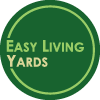
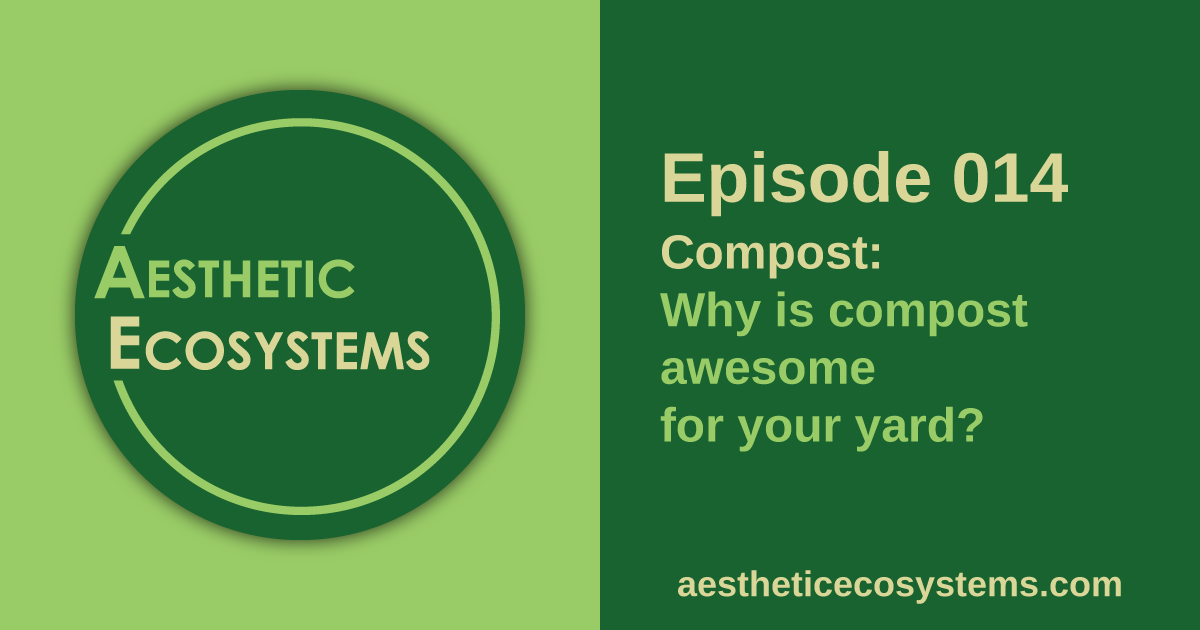
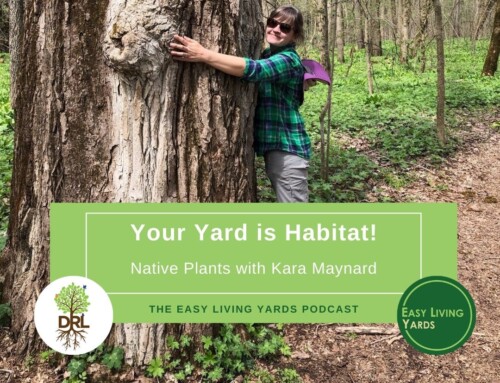
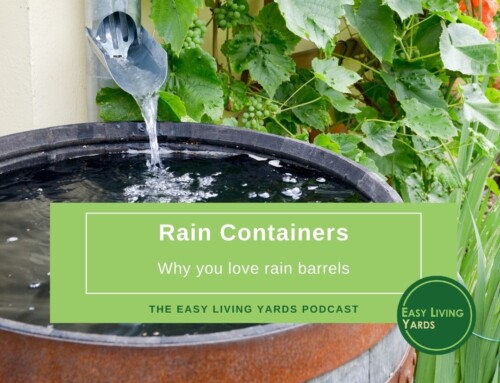
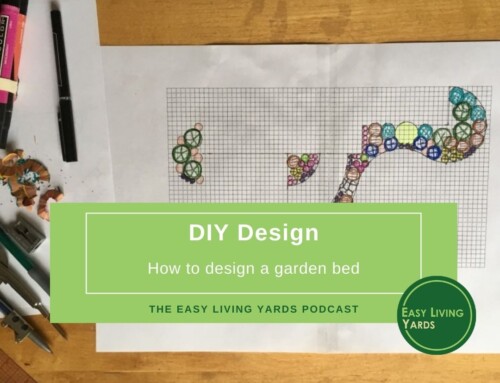

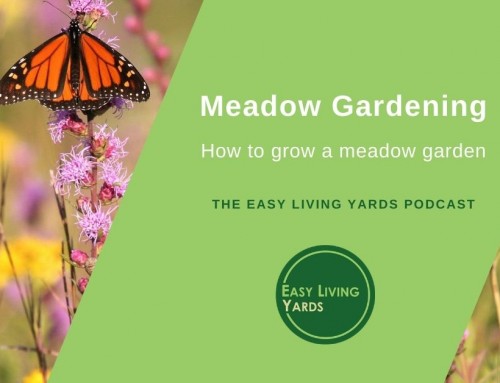
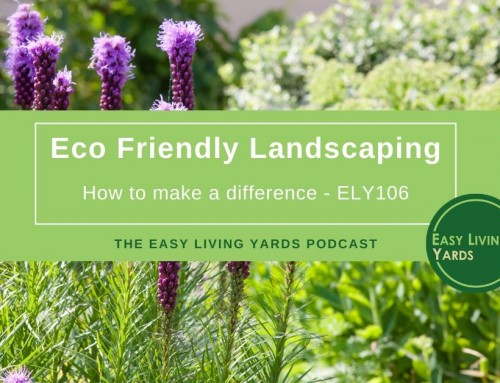
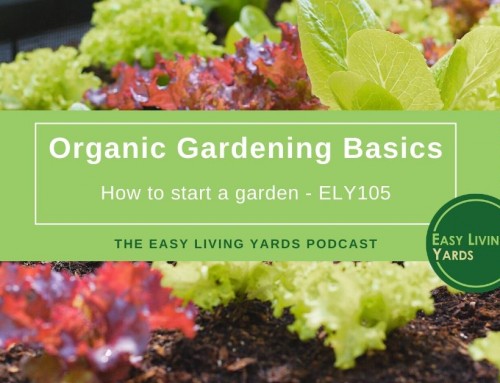
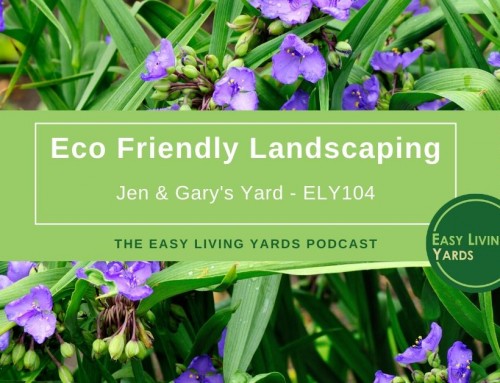

Leave A Comment